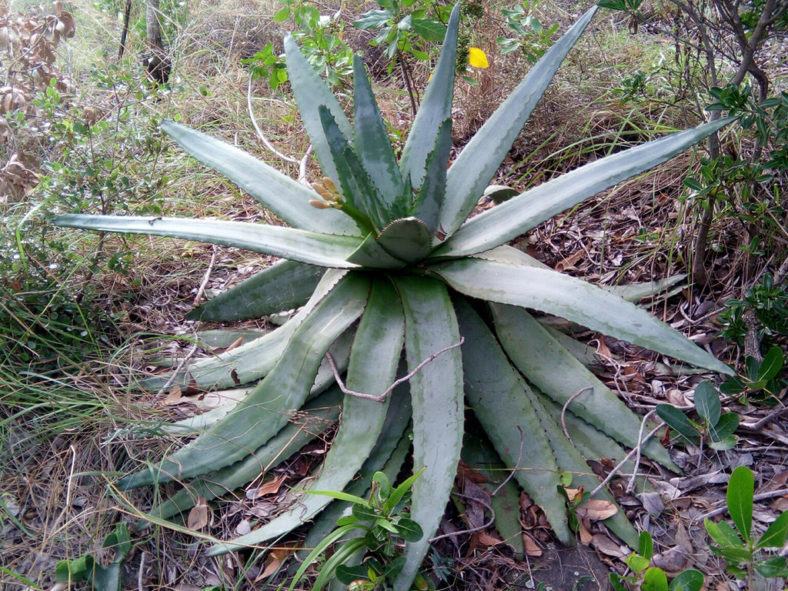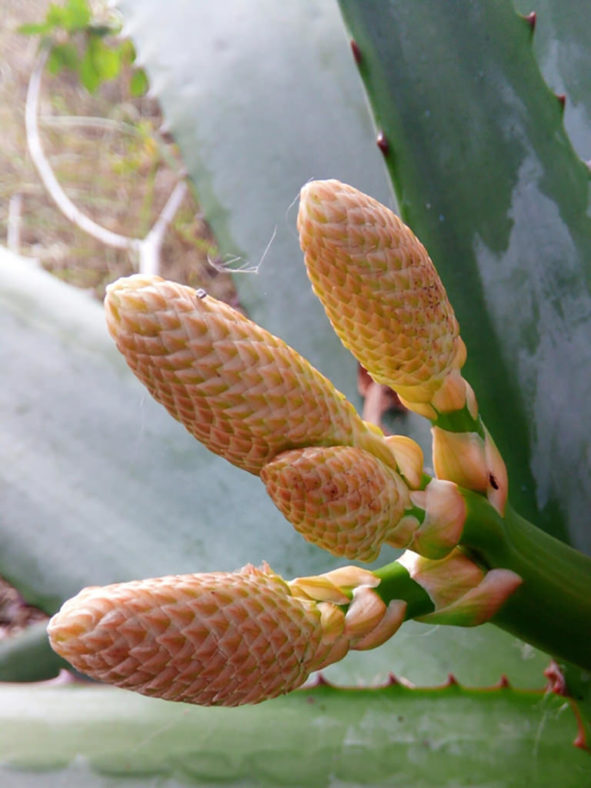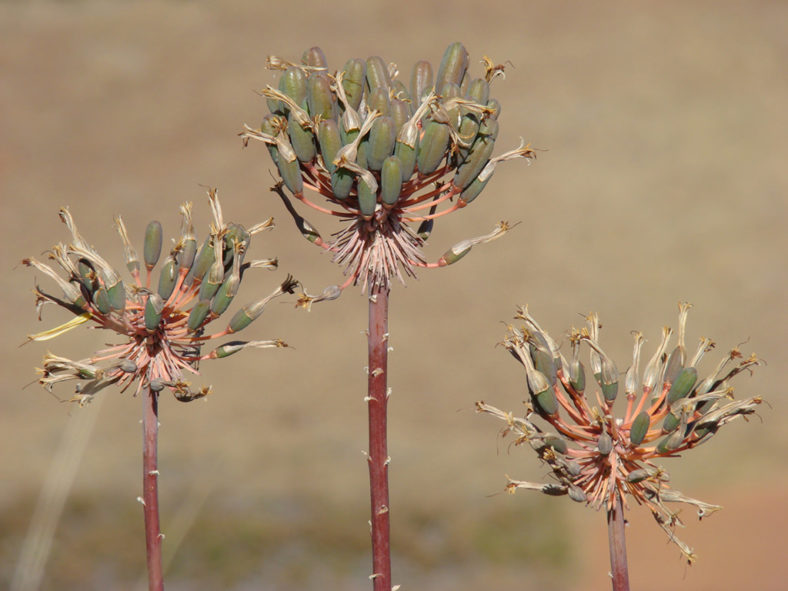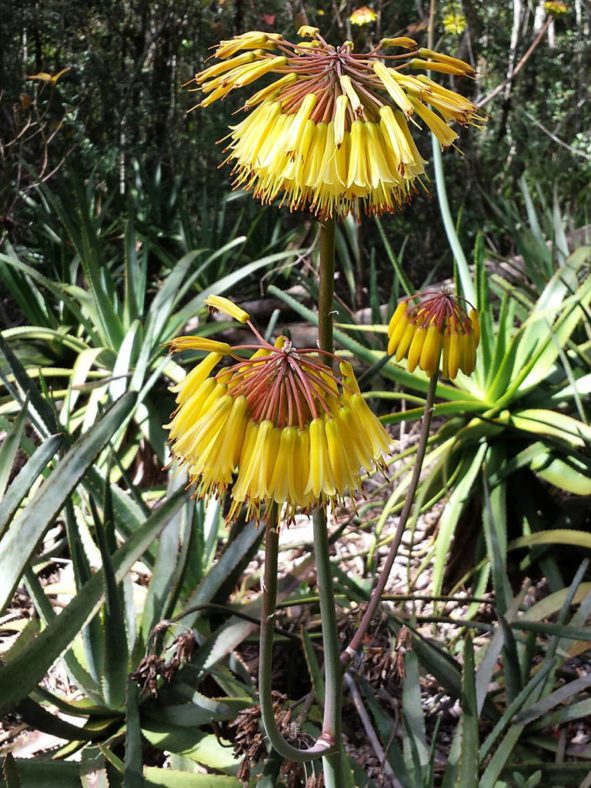Scientific Name
Aloe capitata Baker
Common Name(s)
Cooper's Aloe
Synonym(s)
Aloe capitata var. capitata, Aloe cernua
Scientific Classification
Family: Asphodelaceae
Subfamily: Asphodeloideae
Genus: Aloe
Etymology
The specific epithet "capitata (kap-ih-TAY-tuh)" means "having or forming a head" and refers to the headlike racemes.
Origin
Aloe capitata is native to Madagascar. It occurs only in the mountains of former provinces Antsiranana, Antananarivo, and Fianarantsoa.
Description
Aloe capitata is an attractive succulent that forms a stemless or short-stemmed, usually solitary rosette of gray-green to blue-green leaves with sharp teeth along the margins. The fleshy leaves are lance-shaped, measuring up to 28 inches (70 cm) long and 2.4 inches (6 cm) wide. They take on pink to deep maroon hues when exposed to bright light.
The inflorescence can grow up to 32 inches (80 cm) tall and has 2 to 4 branches with 30 or more yellow to orange-yellow flowers densely arranged in terminal clusters. The flowers are bell-shaped and appear in late fall and winter. They can reach up to 1.2 inches (3 cm) in length and 0.25 inches (0.6 cm) in diameter. The fruits are cylindrical capsules about 0.3 inches (0.7 cm) long and contain black seeds.

How to Grow and Care for Aloe capitata
Light: When growing A. capitata indoors, place your plant in a window with plenty of bright indirect sunlight. Rotate the pot once or twice a week so that all sides of the plant receive equal lighting. Outdoors provide light shade, especially during the hottest parts of the day.
Soil: Plant A. capitata in a well-drained soil mix formulated for succulents or make your own. Drainage is essential because too much moisture around roots can cause root rot.
Temperature: This succulent grows at its best at temperatures between 50 to 85 °F (10 to 30 °C). When temperatures shift below 50 °F (10 °C), it is time to bring your plant back inside. A. capitata can withstand temperatures as low as 30 °F (-1.1 °C). USDA Plant Hardiness Zones 10a to 11b, 30 to 50 °F (-1.1 to 10 °C).
Watering: This succulent does need regular watering but is very tolerant of drought conditions for short periods. Water deeply, but only when the soil is dry. Cut back on watering during the winter months. Do not let water stand in the rosettes.
Fertilizing: A. capitata generally does not require fertilizer but may benefit from the extra nutrients. Feed with a fertilizer for succulents in spring and summer only. Be sure to follow the label directions.
Repotting: This plant is not particularly fast-growing and will only rarely need repotting. Repot it in the spring in a container a few inches larger in diameter every few years to keep it from becoming rootbound.
Propagation: Since it rarely produces offsets, A. capitata is usually propagated by seed. For best results, sow seeds during the warm months.
Learn more at How to Grow and Care for Aloe.
Toxicity of Aloe capitata
A. capitata is not listed as toxic for people and pets.
Links
- Back to genus Aloe
- Succupedia: Browse succulents by Scientific Name, Common Name, Genus, Family, USDA Hardiness Zone, Origin, or cacti by Genus
Photo Gallery
Click on a photo to see a larger version.


